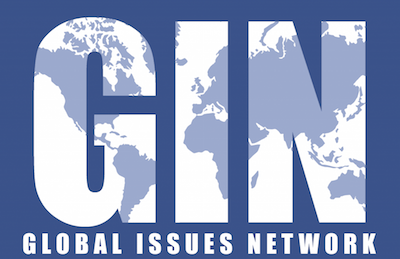Excerpt From: Rischard, Jean-Francois.
“High Noon: 20 Global Problems, 20 Years To Solve Them.” iBooks.
“No one knows the total number of living species, but estimates range anywhere between 10 and 15 million. What is sure is that the rate of extinction has been increasing. The main reason so many species are dying off or risking extinction is the loss of their habitats as a result of agriculture, deforestation, forest fragmentation by roads, and human population growth more generally. Other threats include global warming, pollution, hunting, fishing, trading, and the introduction of foreign species to an area.12
The evidence of this increased extinction rate is everywhere:
Some 60 percent of coral reefs are threatened, a serious concern as they provide livelihoods for millions of people and the habitat for many species, including one-fourth of all marine fish.
The world’s tropical forest cover has been shrinking.
Some 75 percent of major marine fish species are either depleted or dwindling fast due to overfishing.
Some 50 percent of the world’s coastal mangroves—vital nursery grounds for countless species—are gone.
Nearly one in five mammal species is threatened with extinction.13
One in eight bird species is at risk. The number of threatened species has doubled among penguins,14 for example, and has quadrupled for albatross varieties.
https://youtube.com/watch?v=zpM-nkhZCgk+
Hunting, habitat loss, and illegal bush-meat trade has raised the number of threatened primate species from about 100 to 120 in just a few years’ time. Some conservationists fear that one or two decades from now, the Congo Basin’s rain forest (the world’s second-largest tropical forest) could be emptied of large mammals and that Africa’s great apes could become extinct.
Amidst considerable controversy, estimates of present extinction rates range from 100 to 1,000 times the normal extinction rates, with most estimates at 1,000. And some believe that by the time mankind reaches into the next century, more than half of all species of mammals, birds, butterflies, and plants will have disappeared or will be well on their way towards extinction. As has been well said: death is one thing, but the end to birth is another.
https://youtube.com/watch?v=kaW0tr0Keic+
But there’s even more at stake than just preserving the wonderful and rich diversity of life on earth:
Biodiversity plays a big role in the very stability of the five major ecosystems on which life depends: the agricultural, coastal, forest, freshwater, and grassland ecosystems.15 A variety of plant species play essential roles at the heart of these ecosystems—from purifying water to recycling carbon and nitrogen.
Diversity increases an ecosystem’s resilience. Having more species provides a greater cushion against environmental damage, such as from global warming, drought, and other stresses. In particular, the genetic diversity of plants, insects, animals, and microorganisms determines the long-term productivity of agricultural ecosystems, their ability to bounce back after shocks, and their capacity to ensure sufficient food for the future. Yet the trend has been towards replacing polycultures with monocultures—and towards reliance on fewer varieties. Sri Lanka had 2,000 rice varieties in 1959, but by the 1980s, just five.
Biodiversity is also fundamental to human health. From high cholesterol to bacteria fighters, ten of the world’s twenty-five top-selling drugs are derived from natural resources.
Biodiversity and ecosystem protection is thus one of the big and urgent global issues of the decades to come. The solutions are too complex to be laid out here, but a global framework would include many elements: protected areas, actively managed preserves, trade bans, integrated ecosystem management, certification of sustainability, seed banks, satellite monitoring, and many others. It’s not that some of these haven’t been tried before here and there, but it’s a matter of critical mass and global resolve—and of increasing the modest resources currently devoted to conservation by a large factor.17 Remarkably, these solutions are made more manageable and affordable by the fact that twenty-five “hot spots” covering only 1.4 percent of the planet’s land area contain about 45 percent of all plant species and 35 percent of all vertebrate land animals.18 And yet the mass extinction of species continues, despite a battery of treaties and conventions aimed at their preservation. One can say the same thing of two related issues: fisheries depletion and deforestation.”
Excerpt From: Rischard, Jean-Francois.
“High Noon: 20 Global Problems, 20 Years To Solve Them.” iBooks.
https://youtube.com/watch?v=2RC3Hsk90t8+
